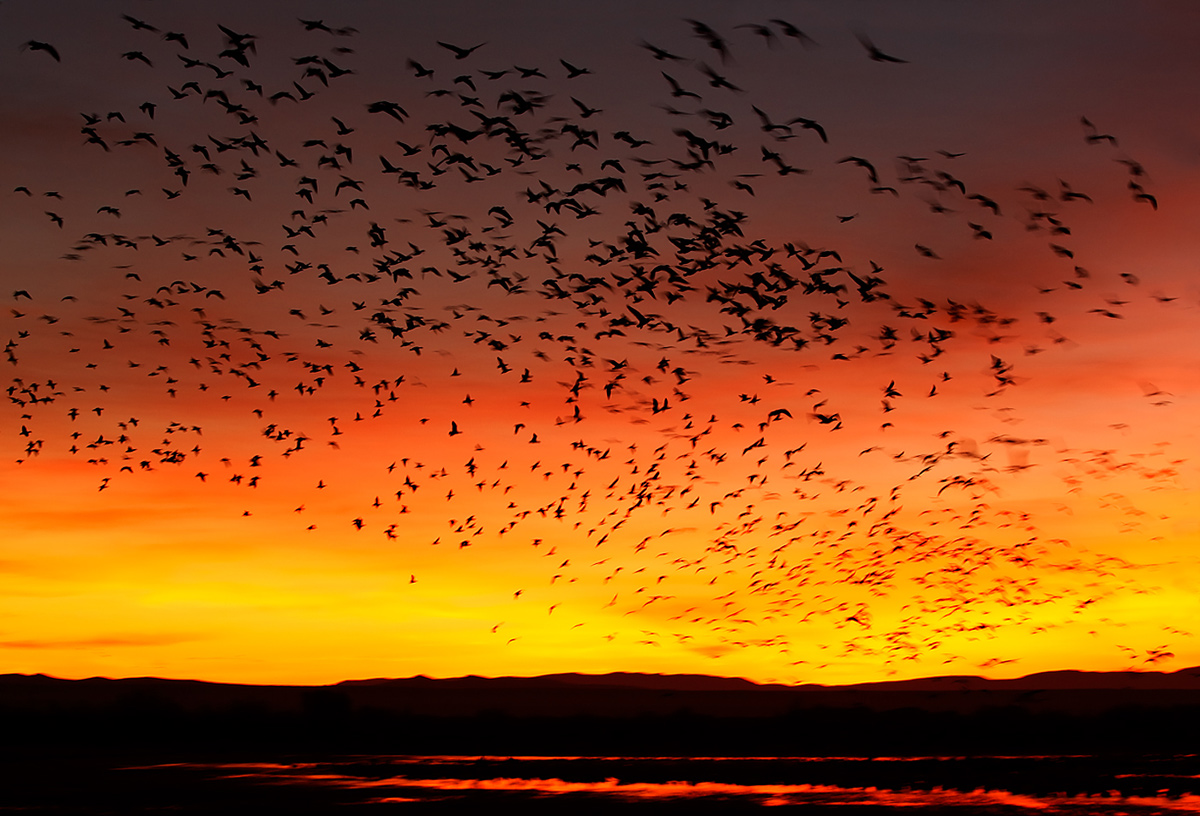
|
|
Snow Geese, early morning fly-in, Bosque del Apache NWR, NM, with the Canon EF 70-200mm f/4L IS USM lens hand held at 70mm. |
Small But Deadly: The 70-200mm Telephoto Zoom Lenses
When most folks think of lenses for bird photography, they usually think of one of the super-telephoto focal lengths: 500, 600, or 800mm. But there are many times when lenses in that class are simply not the right tool for the job. When you are working in close quarters, when you need to be able to handhold for flight or action, when you want to frame wide or vary your framing to include a group of birds or attractive habitat, or when your long lens is simply too long for the task, a short telephoto zoom lens is likely to be perfect. My very favorite short telephoto zoom range is 70-200mm because it offers me freedom, flexibility, and adaptability when I need it. I never make a trip without one in my Think Tank Rolling Bag.
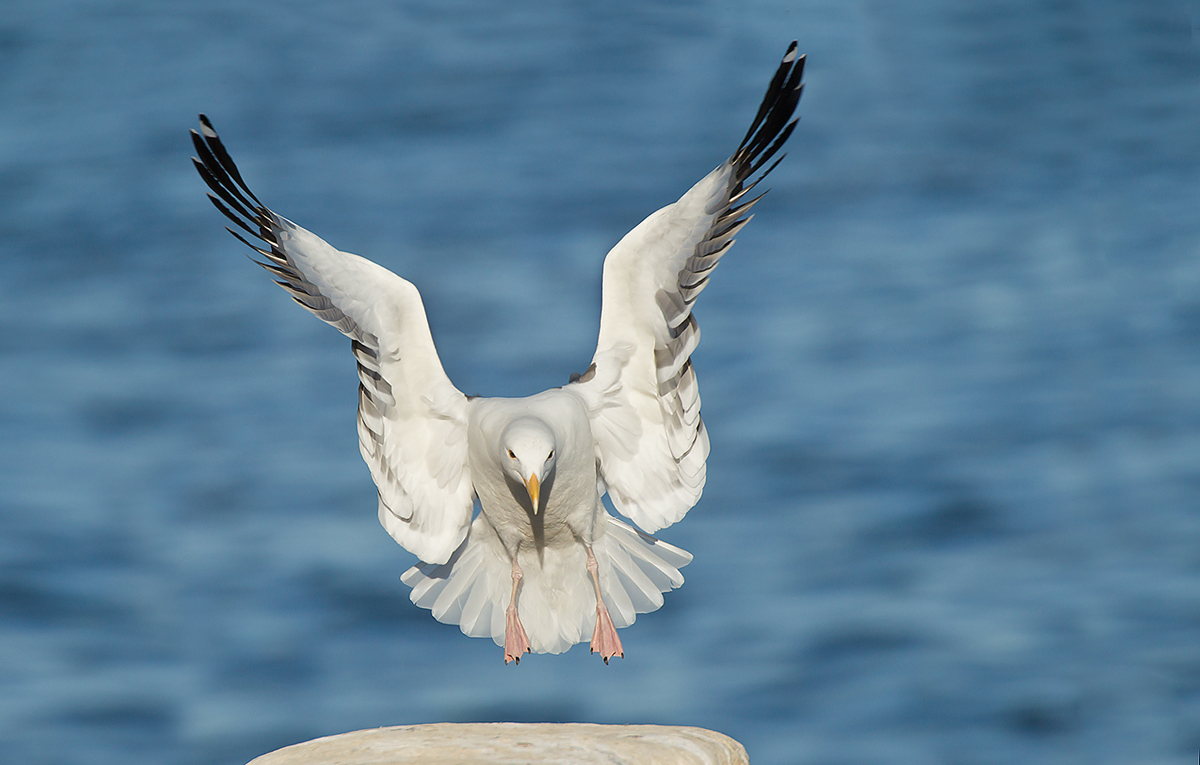
|
|
Western Gull landing, LaJolla, CA with the Canon EF 70-200mm f/2.8L IS II USM lens and the Canon 2x EF Extender III (Teleconverter) hand held at 400mm. |
I purchased the Canon EF 70-200mm f/2.8L USM Telephoto Zoom lens just before an eagle trip to Alaska in 2005. Having never been before, I was somewhat skeptical when told that a 70-200 would be my most valuable lens on the trip, but that is exactly as it turned out. When feeding the eagles was still legal, the birds flew by at extremely close range. Though I had my 500mm f/4L IS along as well as a borrowed 300mm f/2.8 L IS, I rarely used them.

|
|
Laysan Albatross landing, Midway, with the Canon EF 70-200mm f/2.8L IS II USM lens and the Canon 2x EF Extender III (Teleconverter) hand held at 222mm. |
At 2.9 lbs., the older f/2.8 L IS version was and is eminently hand-holdable. The physical length of the lens is 7 3/4 inches. And it is a lot cheaper than the Series II version–see below for detailson that one. The older version focuses down to 1.4 meters–a shade under 4 ft. 6 in. This lens performs extremely well as a 98-280mm f/4 zoom lens with the 1.4X teleconverter in place; this enhances the flexibility of this lens. Somewhat amazingly–there is a newer version–this lens is still in production today. Note: I always recommend removing the tripod collar if possible on lenses that you will be hand holding for flight and action photography.
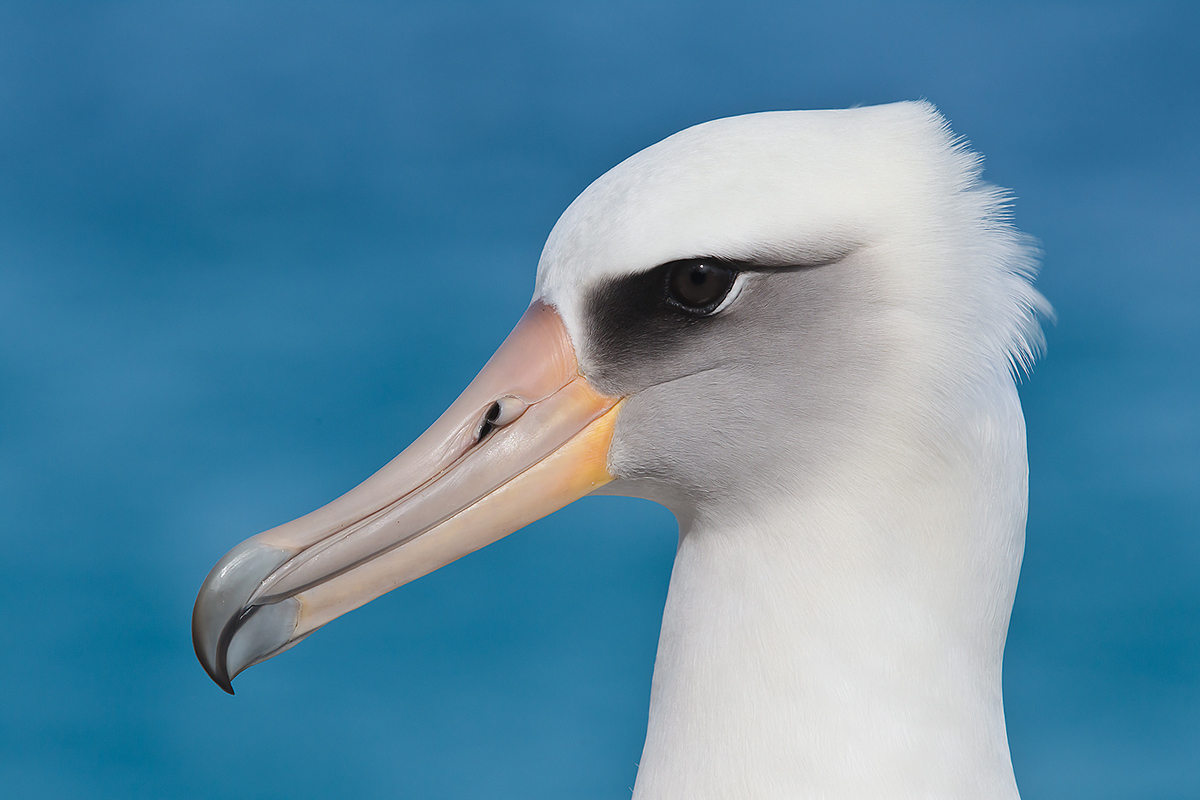
|
|
Laysan Albatross, Midway, with the Canon EF 70-200mm f/2.8L IS II USM lens and the Canon 1.4x EF Extender III (Teleconverter) hand held at 280mm. |
Several years ago an old friend purchased the Canon EF 70-200mm f/4L IS USM lens and almost immediately began touting its virtues. At just 1.7 lbs. and only 6 5/8 inches in length, this smaller, lighter cousin of the heftier f/2.8 version made a lot of sense to me so I purchased one soon after trying it out at the St. Augustine Alligator Farm. The minimum focusing distance of the f/4 version is 1.2 meters–a bit more than 3 ft. 9 in.
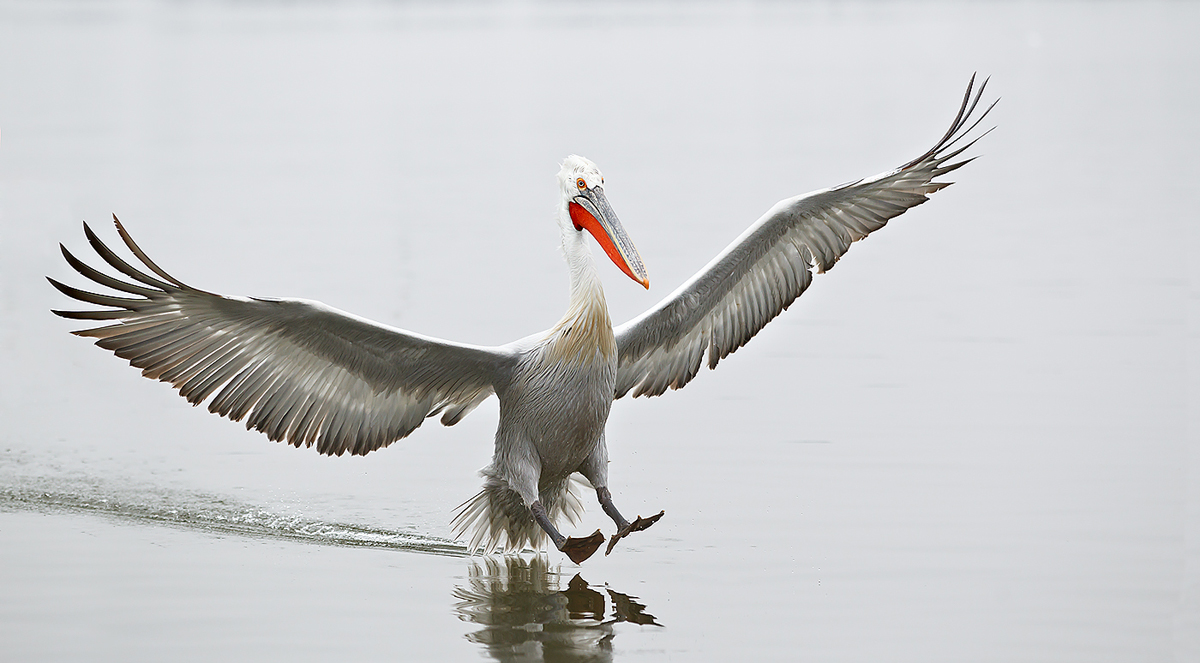
|
|
Dalmatian Pelican landing, Lake Kerkini, Greece with the Canon EF 70-200mm f/2.8L IS II USM lens hand held at 155mm. |
For a few years I used and depended on the lighter f/4 version for bird and nature photography. I kept the the old f/2.8 L IS lens but pretty much used it mainly to photograph my granddaughter Maya’s dance recitals; when working indoors when the use of flash is prohibited the extra stop of light is much appreciated. The speed of the f/2.8 lens allows me a stop more shutter speed than if I were using the f/4 version without having to raise the ISO.
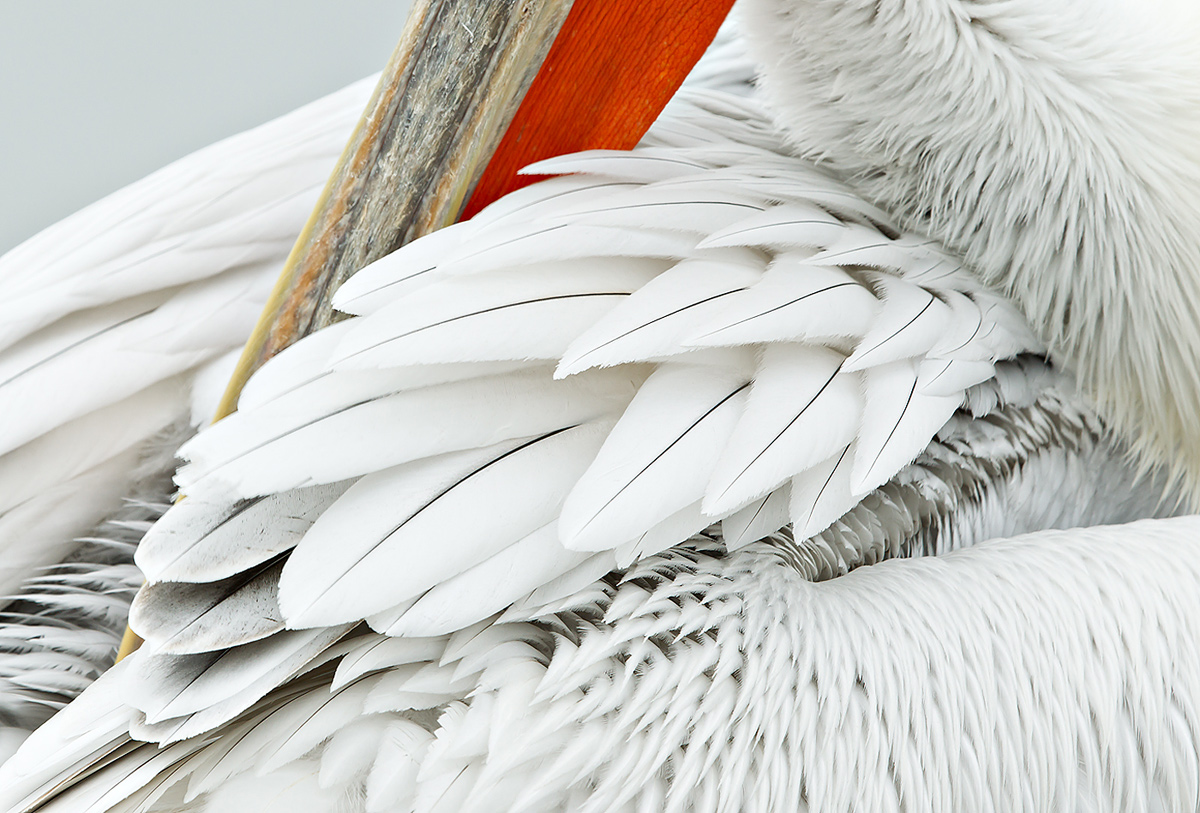
|
|
Dalmatian Pelican feather detail, Lake Kerkini, Greecewith the Canon EF 70-200mm f/2.8L IS II USM lens and the Canon 2x EF Extender III (Teleconverter) hand held at 335mm. |
On a Galapagos trip about 4 years ago friend Patrick Sparkman was raving about his new Canon EF 70-200mm f/2.8L IS II USM lens. The new version of the f/2.8L IS lens weighs 3.29 pounds and has a great minimum focusing distance of 3.94 feet. What sold me was seeing the great flight images that Patrick made with his new toy and the older 2X II teleconverter. With the new 2X III TC that combo is even sharper. After getting the new 70-200mm f/2.8L IS II lens I quickly sold both my 70-200 f/4L IS and the older version of the 70-200mm f/2.8L IS. Now I never leave home without my Series II 70-200mm f/2.8L IS….
As much as I love the latest version of the 70-200, the f/4 version is still an attractive option for folks looking to save weight and money. And with the continually improving high ISO performance (in terms of noise) of today’s digital camera bodies, the smaller lighter 70-200 makes even more sense….
Note: Nikon folks should be looking at the Nikon AF-S Nikkor 70-200mm f/2.8G ED VR II lens along with the Nikon TC-14E II 1.4x Teleconverter for D-AF-S & AF-I lenses only.
Now lets take a look at the various ways that I use my 70-200 IS lens. Most often I mount the lens to a camera body and hang it over my right shoulder via the Black Rapid RS-7 strap. Unless otherwise indicated the 1.4X III TC is in place giving me a range of from 98-280 mm with one of my full frame bodies. Most often I am using my 5D Mark III but if I expect lots of flight and action I will go to one of my 1d x bodies.
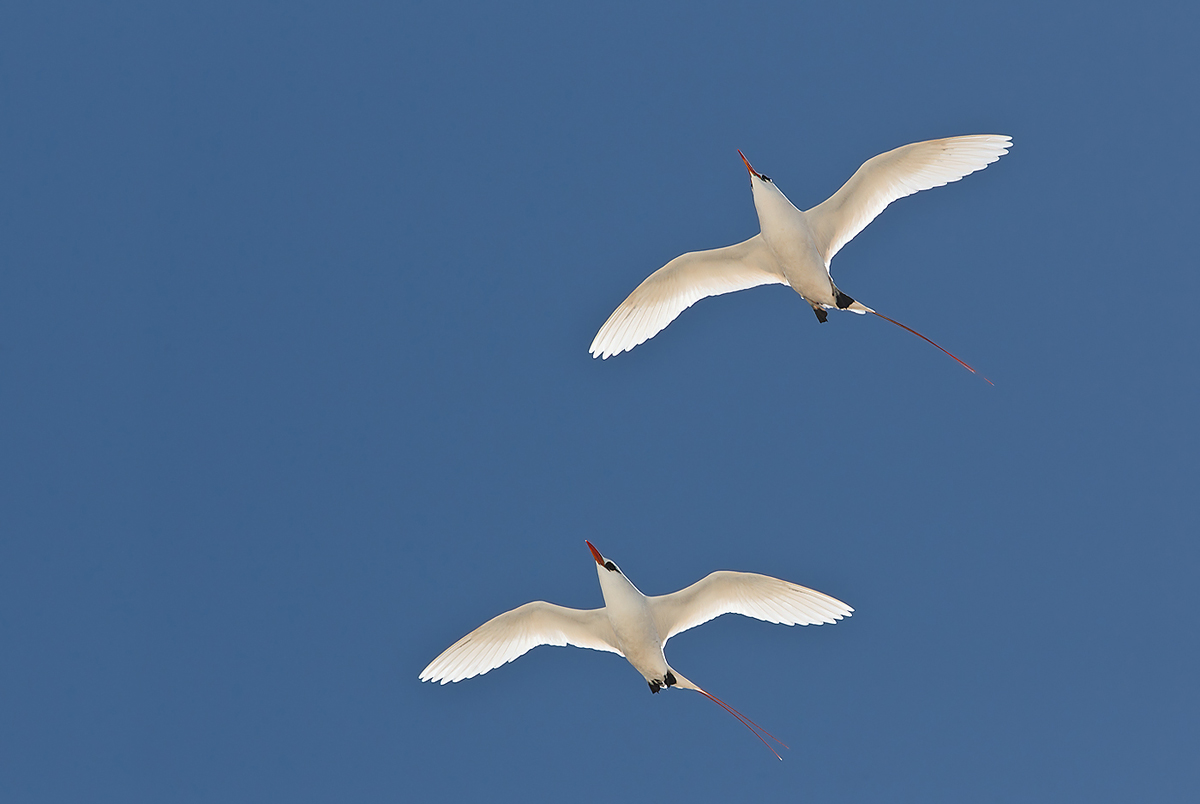
|
|
Red-tailed Tropicbirds displaying, Midway, with the Canon EF 70-200mm f/2.8L IS II USM lens and the Canon 1.4x EF Extender III (Teleconverter) hand held at 280mm. |
If I am walking down a beach where the birds are not as likely to be close and there are lots of opportunities for flight photography I might have my 300 f/2.8L IS II lens on my shoulder as my auxiliary intermediate telephoto but then I will have the 70-200 in the large rear zipper pocket of my custom-designed Xtrahand Magnum Vest by Vested Interest so that I can grab it if I need a wider focal length. And the 24-105 L IS zoom lens is always in my vest as well.
At places like Bosque del Apache NWR in San Antonio, New Mexico where there is often a combination of great light, great scenery, and large groups of birds I will often handhold my 70-200 but I am just as likely to have it on my standard one-size-fits-most lasts a lifetime Gitzo 3532 LS Carbon Fiber model with a Mongoose M3.6.
My advice for creating pleasing and effective bird-scapes it is best to include a clean lower edge at the bottom of the frame, a bird-less strip of water or earth that will anchor your image. If there are birds on the ground or in the water, be sure to focus on the closest row of birds and lock that focus. That’s just another reason to use rear focus. If the birds are in the air, strive to focus on the closest birds in the flock. Activating your camera’s full array of focusing sensors will usually accomplish that. Practice zooming in and out with your rig mounted on the tripod so that you are able to frame your images accurately when there is a huge blast off in front of a glorious sunrise. And remember, it is always best to zoom a bit wider than you think is necessary when photographing groups of birds in flight….

|
|
Snow Geese in main pool, Bosque del Apache NWR, NM, 5-frame stitched pano with the tripod-mounted with the Canon EF 70-200mm f/4L IS USM lens. |
At times I will handhold the 70-200 when creating images for a stitched panorama but it is almost always better to tripod-mount your lens for a variety of reasons: you can carefully level your rig to ensure square-to-the-world images; if you do not use rear focus you can use AF to focus and then easily turn the AF switch to M: and working on a tripod allows you to take your time and to carefully frame your images. That said, it is always best to frame well wider than you think when creating images for stitched panoramas. Doing so gives you margin for error when it comes to framing and cropping the final image. Be sure to overlap your images by about 30%. I stitch my panoramic images together in Photoshop CS-5 using File/Automate/Photomerge.
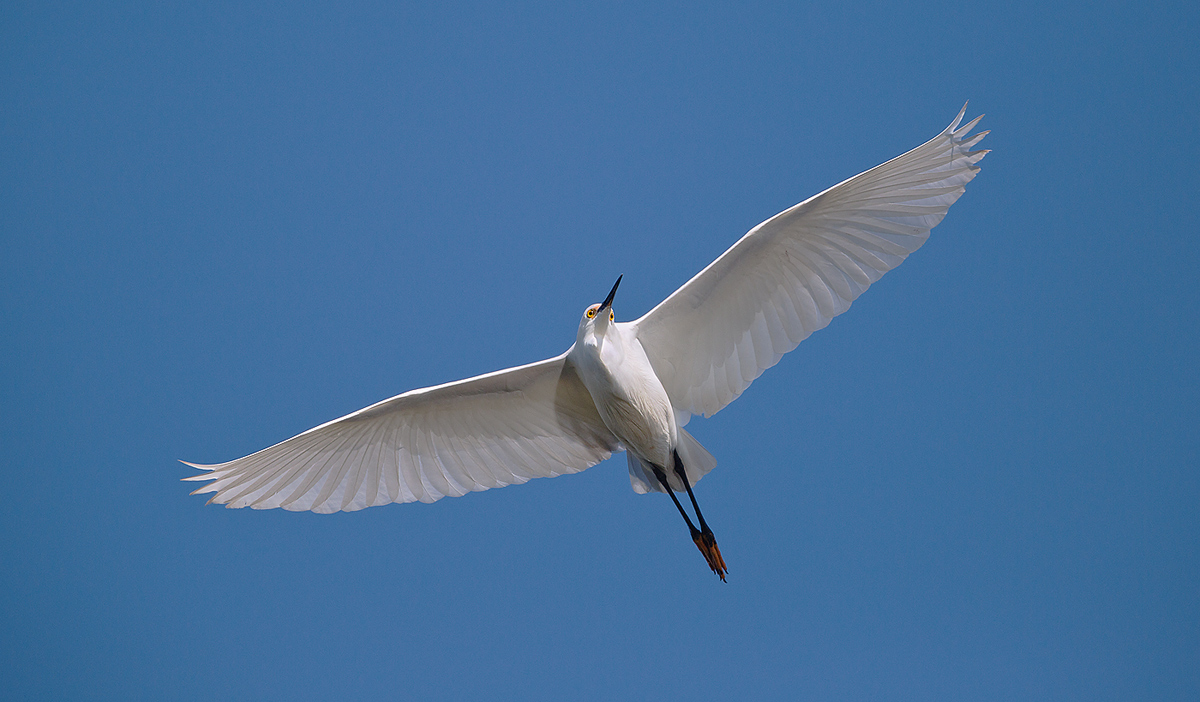
|
|
Snowy Egret in flight, Gatorland, Kissimmee, FL with the Canon EF 70-200mm f/2.8L IS II USM lens and the Canon 2x EF Extender III (Teleconverter) hand held at 400mm. |
On occasion I use the 70-200 to create zoom blurs especially of large groups of flowers or birds. I do this either handheld or with the lens on a tripod. I choose my lowest ISO and work in Manual mode so that the meter will not be fooled by the framing. I set a shutter speed of either 1/4 or 1/5 second and set the aperture to give me the correct exposure. I always depress the shutter button while zooming from long to wide even though I know that it does not matter if you zoom from wide to tight. It takes lots of practice. The results will vary so be sure to create lots of images and to check the results on the camera’s LCD.
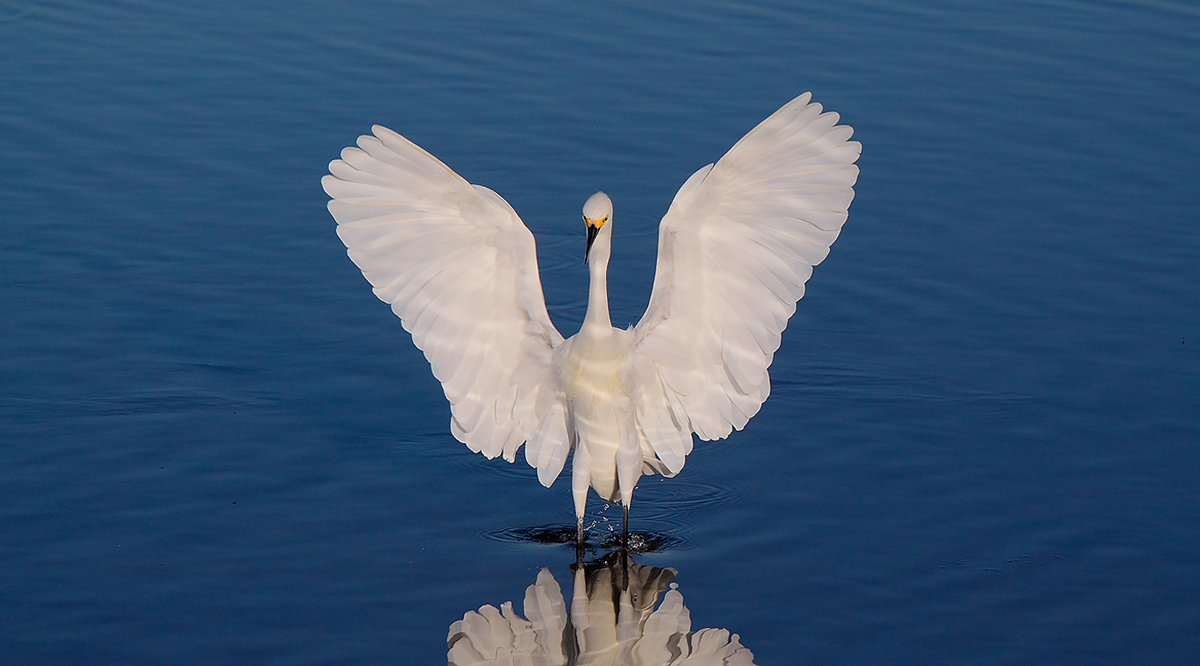
|
|
Snowy Egret landing, Fort Desoto Park, near St. Petersburg, FL with the Canon EF 70-200mm f/4L IS USM lens hand held at 155mm. |
On occasion, I like to walk down the beach with just a 70-200 on my shoulder and a 1.4X teleconverter in my pocket and see what I can do. But whether I am just out for a photographic stroll or have the tripod-mounted 600 f/4L IS II on my shoulder and a ton of gear in my vest, I will surely have a 70-200 along. Do the same, think wide, and keep your creative mind open and you too will soon learn that these short telephoto zoom lenses can fast become be an extremely versatile and productive tool in the right hands: yours.
Your Favorite?
Take a moment to leave a comment and let us know which of the images above you like the best and why you made your pick.
Questions on the various iterations of the 70-200 are of course welcome.
An Amazing Streak
Today’s blog post marks 38 days in a row with a new post, a new record by far that should continue for at least another week or two. To show your appreciation, we ask that use our B&H and Amazon affiliate links for all of your B&H and Amazon purchases. Please check the availability of all photographic accessories in the BIRDS AS ART Online Store. We sell only what I use and depend on. We will not sell you junk. We know what you need to make creating great images easy and fun. And we are always glad to answer your gear questions via e-mail.
You can find the following items in the store: Gitzo tripods, Mongoose M3.6 and Wimberley heads, plates, low feet, and accessories, flash brackets, , Delkin e-film Pro Compact Flash Cards, LensCoat products, and our unique line-up of educational materials including ABP I & II, Digital Basics, Site and Set-up e-Guides, Canon and Nikon Camera Users and AF e-Guides, and MP-4 Photoshop video tutorials among others.
We would of course appreciate you using our B&H and Amazon affiliate links for all of your B&H and Amazon major gear, video, electronic, household, and personal purchases. For the photographic stuff mentioned above we would of course great appreciate your business.
Thanks and enjoy!
Last Year’s Grand Prize winning image by Lou Coetzer
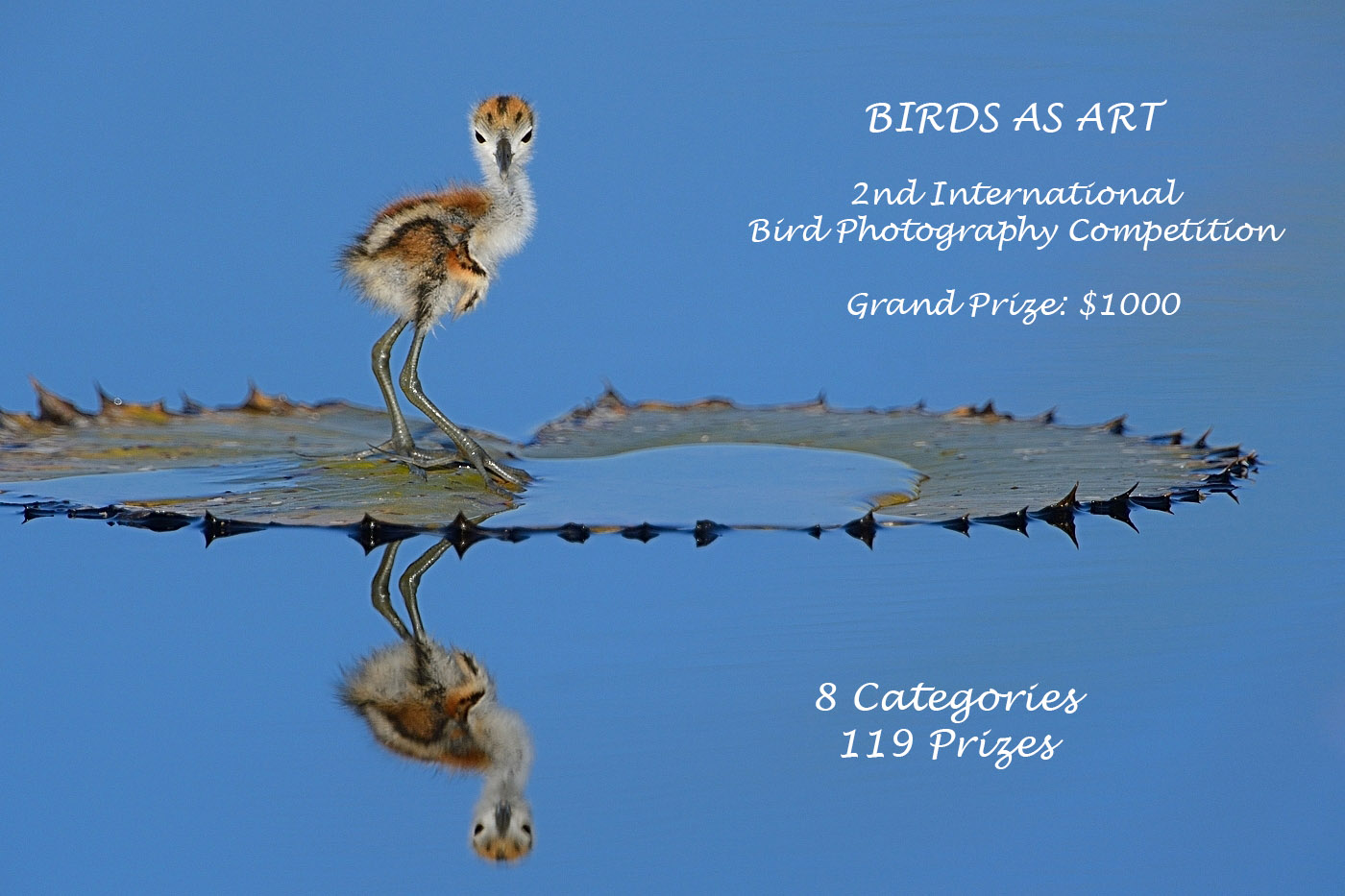
|
Important Contest News
Contest Deadlines Extended!
BIRDS AS ART 2nd International Bird Photography Competition
New Entry Deadline: January 31, 2014; see additional details below
With so many folks signing up at the last minute and with so many folks having trouble uploading their images due to server overload the deadline for entering the contest (registering and paying) has been extended until January 31, 2014 and the deadline for uploading images has been extended until midnight Eastern time on February 10, 2014. Take advantage of this extension to have a crack at the great prizes.
Learn more and enter the BIRDS AS ART 2nd International Bird Photography Competition here. Twenty-five great prizes including the $1000 Grand Prize and intense competition. Bring your best.
Register and Pay
To register click here.
To learn of payment options, click here.
Important Contest Note
Jim Litzenberg will be on vacation until tomorrow, January 2, 2014; those who paid for the for the contest very recently should receive their payment confirmation e-mail from Jim some time on Thursday.
Support the BAA Blog. Support the BAA Bulletins: Shop B&H here!
This Bulletin took about 12 hours to prepare
We want and need to keep providing you with the latest free information, photography and Photoshop lessons, and all manner of related information. Show your appreciation by making your purchases immediately after clicking on any of our B&H or Amazon Affiliate links in this blog post. Remember, B&H ain’t just photography!




Amazon
Everyone buys something from Amazon, be it a big lens or deodorant. Support the blog by starting your search by starting your search by clicking on the logo-link below. No purchase is too small to be appreciated; they all add up. Why make it a habit? Because I make it a habit of bringing you new images and information on an almost daily basis.
Typos
In all Bulletins, feel free to e-mail or leave a comment regarding any typos, wrong words, misspellings, omissions, or grammatical errors. Just be right. 🙂
IPT Info
Many of our great trips are filling up. See especially info on the South Florida, Holland, and Nickerson Beach IPTs. Two great leaders ensure that you will receive individual attention, have all of your questions answered, and learn a ton including how to think like a pro, see the situation, and get the right exposure every time. In addition you will have fun, and make lots of great images. Click here for IPT details and general information.














Hi Artie, not sure if you are still checking comments on these older postings. I had one question, if you remove the tripod ring from the 70-200 f/2.8 IS II, what are you mounting the BR 7 strap to? I had thought about taking mine off but I use the foot to screw in my BR strap to. I thought attaching to the camera might put too much torque on the lens mount? Maybe it would be okay? Your thoughts?
Thanks
Hi Geoff, I screw the bolt into the bottom of the camera. It hangs straight down that way, I do not need any extra pieces, and I can grab it as if I were grabbing a gun from the holster with my finger on the trigger!
I always see comments on old posts 🙂 artie
Thanks Jim and Artie
That does help a lot in the decision.
P.s. I’m up in Ontario Canada today it’s -20c. Which is not usual for southern Ontario.
I do a lot hand holding and shooting out the truck window on the Blubb. I also do a lot of aircraft photography so I just don’t know which way to go yet.
I may rent and see which I like first?
Thanks for the comments boys………GREAT Site!
Craig
I like the Albatross head shot and the pelican feather detail, love the texture of the feathers, it would make a good canvass.
I have the 70-200 2.8 version one. To compliment it what would you choose ? the 300 2.8 is vers 1 or the 500 f4 is vers 1. Opinions ?
Craig, I still have and shoot my 500 f/4L IS (ver.I). Thank heaven the quality in the images did not drop when the ver.II was introduced 🙂 My only “problem” is the eight and a half pounds vs the seven pounds of the ver.II. It does well with the 1.4x II extender. Artie and others have said that the 1.4x II & III are rather close, it’s the 2x II & III where there is a big improvement.
I think you would be happy with the 500 ver.I and it would be a longer step up from your 70-200 f/2.8 than the 300 f/2.8, another great ver.I lens. I don’t have either 300 f/2.8 but wonder about how much I would use one if I bought one.
Craig, Hit the post button too soon. I think it depends on what and where you shoot. Here in Florida the birds are rather tame but at the same time when I’m at Viera or MINWR I don’t want to get down in the water with the ‘gators to “foot zoom.” The 500 lets me get a better angle up to nesting birds this time of year.
Hi Craig, Unless you insist on never using a tripod the 500 II is the way to go. If you hand hold 100% of the time the 300 II would be better. Please remember to use one of our affiliate links for your purchase :).
Hi, Artie,and many thanks for this. Congratulations on your record number of daily blogposts. I have been using my new 70-200 f/2.8L IS II, which I did buy from B&H through your web site, and other than its weight, I just love it. The IS is superb and last time I was at Bosque I had it on one camera body with the 400 f/5.6L on my 7D. Next time I will use that combo as well. Nice to know it works well with the series III TCs. Do you think it’s as sharp and as fast-focusing with the 2X TC as the 400 f/5.6L? How about compared with the 100-400? Certainly your images are superb. My favorites are the landing pelican and the landing egret, but all of them are wonderful.
To state the obvious, very nice images! The 70-200mm f/2.8 II is also one of my favorites for smaller subjects such as butterflies, dragonflies, and damselflies.
To state the obvious, very nice images. I concur about the 70-200mm f.2.8 II lens, which is one of my favorites for smaller subjects such as dragonflies and damselflies.
Great post on Canon’s wonderful array of 70-200 zooms. I took a deep breath a year ago and bought the 70-200 f/2.8 IS II (with the 1.4x and 2x TC IIs) and have never regretted it for an instant. Like the lens combo even better with my new 5D Mk III.
Question: Why do you recommend taking off the tripod mount? Weight savings, balance, or…?
Once in a while, if I’m working without tripod, it’s nice to have the flat surface of the mount to brace on a table or railing as a last resort.
Happy New Year to you and your great staff.
Thanks Geoff, Lighter is always better for hand holding. You can always rest the back of your left palm on the table or the railing… best, artie
I find that I use my 70-200 f/4L IS more than ever since I got my 5D3. Having all that extra useable ISO vs my 7Ds is a treat even if I may have to crop a bit more now and then. I keep thinking about the 70-200 f/2.8L II but it weighs a little bit more than my 100-400 and that one gets heavy for me after handholding it for a while.
Thanks for the write up, I’ve marked it and will read it again.
Hi Jim, You are most welcome. artie